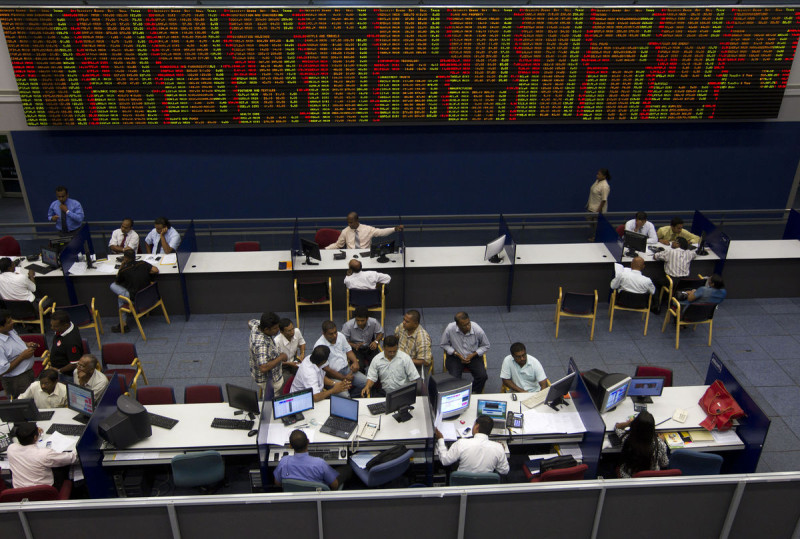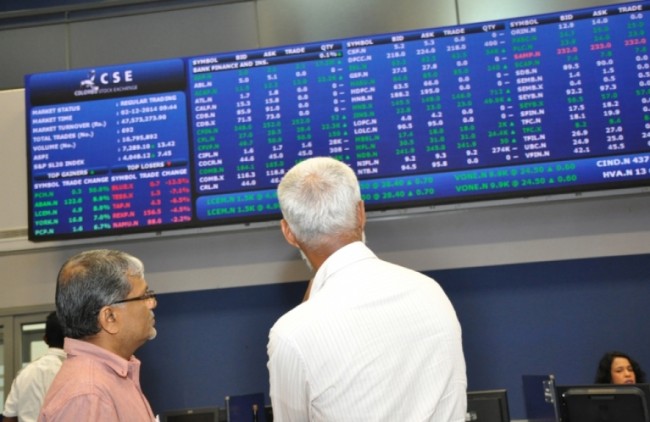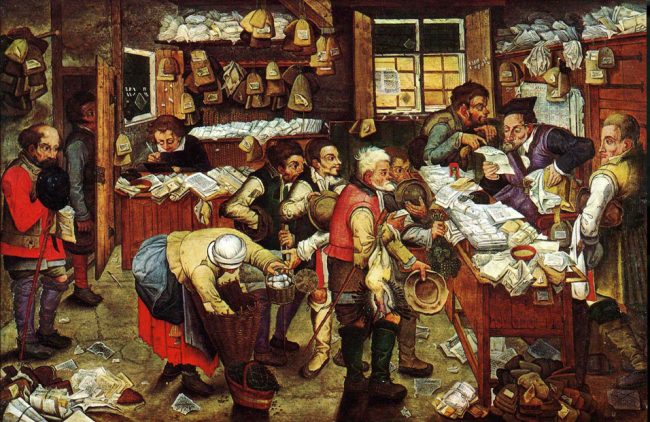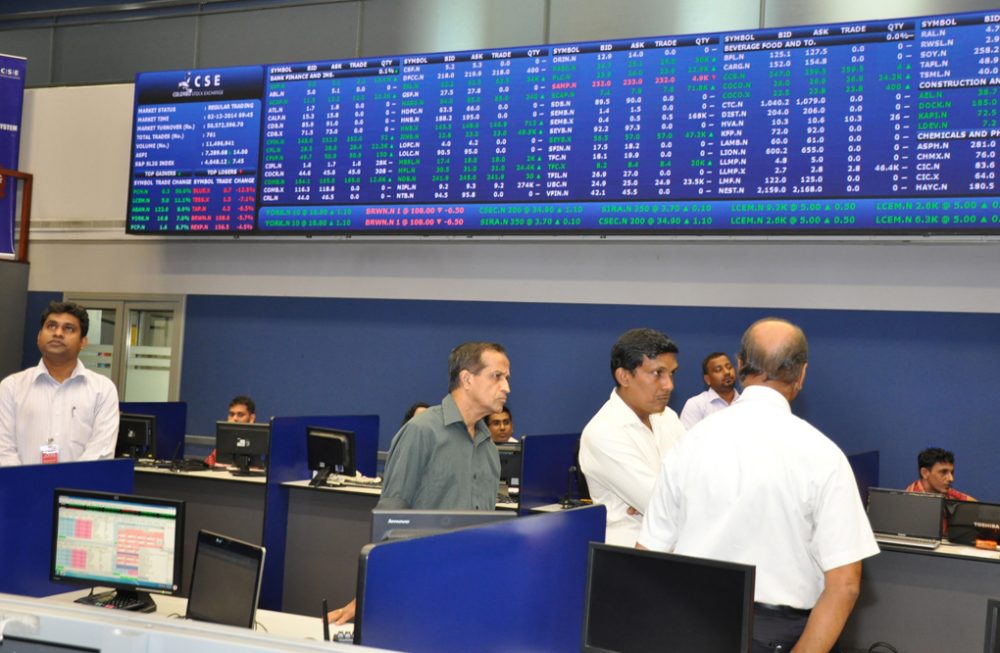
If you have been browsing our site lately, you would’ve noticed that we’ve started dabbling in topics related to the overall economy and the business environment. We recently published an introduction to the Colombo Stock Exchange which we hope you found useful. And starting today, we’ll also be publishing a monthly analysis of the CSE, with the aim of helping you understand what’s going on in the stock market.
The stock market has had a rough ride since last year due to lots of different reasons. While political and economic uncertainty spooked local investors, a slowdown in the Chinese economy and fears of a global recession have spooked investors elsewhere. Like most other markets around the globe, the CSE also took a beating and lost around 840 points in the last 12 months (Feb 2015 to Jan 2016). In percentage terms, that’s a year-on-year (YoY) decline of around 11.7%.

The last year was tough on the CSE, but that doesn’t necessarily bring bad luck for this year. Image Credit: lankadesha.com
That, however, doesn’t necessarily spell doom and gloom. In fact, the CSE has already started to see green here and there, thanks to investors who are buying up valuable shares at cheap prices.
Let’s dive in.
- The CSE sort of rebounded from its losing streak in January. However, foreigners (as a whole) remained net sellers. A breakdown (given below) reveals that while local individuals and foreign institutional investors sold their holdings, foreign individuals and local institutions had been busy buying up shares. Attention here ought to be focused on the local institutions, since they mostly comprise of fund management companies and the treasuries of large, local corporates.
Purchases (Rs.) Sales (Rs.) Net (Purchases-Sales) Foreign Institutions 3.76 Bn 6.64 Bn (2.88 Bn) Foreign Individuals 0.11 Bn 0.09 Bn 0.02 Bn Local Institutions 6.54 Bn 3.16 Bn 3.38 Bn Local Individuals 3.81 Bn 4.33 Bn (0.52 Bn) Total Foreign (2.86 Bn) Total Local 2.86 Bn CSE Purchases and Sales – January 2016 Source: CSE
There tends to be a general perception (at least when it comes to the stock market) that institutional investors have the ability to see through the noise instead of following the crowd, since they can afford to do their own careful research. Therefore, people assume that institutions such as Aberdeen and CF Ruffer make better investment decisions with an eye on the long term. So right now, it looks like foreign institutional investors (FIIs) and local institutional investors have completely contrasting views on the investment climate of the country, i.e. FIIs think that we are less of a good bet (compared to their other options) while local institutions seem to be looking for the calm after the storm.
- Like we mentioned earlier, there is a positive side to the dip in the stock market. Lower share prices have brought the Market’s Price-Earnings Ratio (PER) down to 16.57x from 17.98x, thus giving local shares an arguably much more attractive valuation. The decline in prices has also translated into an increase in the market’s dividend yield, which now stands at 2.37%. (That is an increase of approximately 8.72% compared to the beginning of the month)
- The IT, Oil Palm and Investment Trust sectors witnessed the largest decline in prices. Oil Palm firms have been hit hard due to the decline in global commodity prices. The next most significant declines occurred in the Diversified Holdings, Telecom, Banking and Manufacturing sectors respectively. Also, remember that January is a month in which corporates tend to release quarterly (or sometimes annual) financial reports, and bad news has largely come in the form of corporates reporting flat or marginal growth in earnings. Even John Keells Holdings (JKH), widely considered to be a proxy for the Sri Lankan economy, faced mixed fortunes.
Movement In Prices ‒ By Sector
Sector % Change IT (19.77%) Oil Palms (13.03 %) Investment Trust (11.35 %) Diversified (10.27 %) Telecom (9.71 %) Banking, Finance & Insurance (9.23 %) Manufacturing (9.04 %) Footwear & Textile (8.97 %) Power & Energy (8.67 %) Trading (8.57 %) Source: CSE

TJL’s factory in Avissawella. Image Credit: LMD.lk
- Textured Jersey’s (TJL) market cap increased to Rs. 22.9 billion in January, making it more valuable than Asian Hotels (The property arm of JKH), Access Engineering and Hayleys. Those of you working in the apparel sector will know of TJL as a manufacturer of knit fabrics. What you might not know however, is that TJL is a joint venture between Sri Lanka’s Brandix and Hong Kong’s Pacific Textiles. Thanks to the increase in its market cap, TJL is now the 27th most valuable company in the CSE, by market capitalisation. It is also an impressive feat for the company, given that three months ago, it didn’t even feature in the list.
While those are pretty much the highlights of what went on in the stock market in January, there is an expectation that the stock market will see a few more bad days, mainly due to rising interest rates and the depreciation of the rupee. But the funny thing with any type of market is that one man’s loss can be another man’s treasure, so you might actually be able to snag some valuable shares at rock bottom prices and profit from the market’s folly, wink wink.
Till next time!
The comments, opinions and analyses presented herein are for informational purposes only and should not be considered individual investment advice or recommendations to invest in any security or to adopt any investment strategy.








